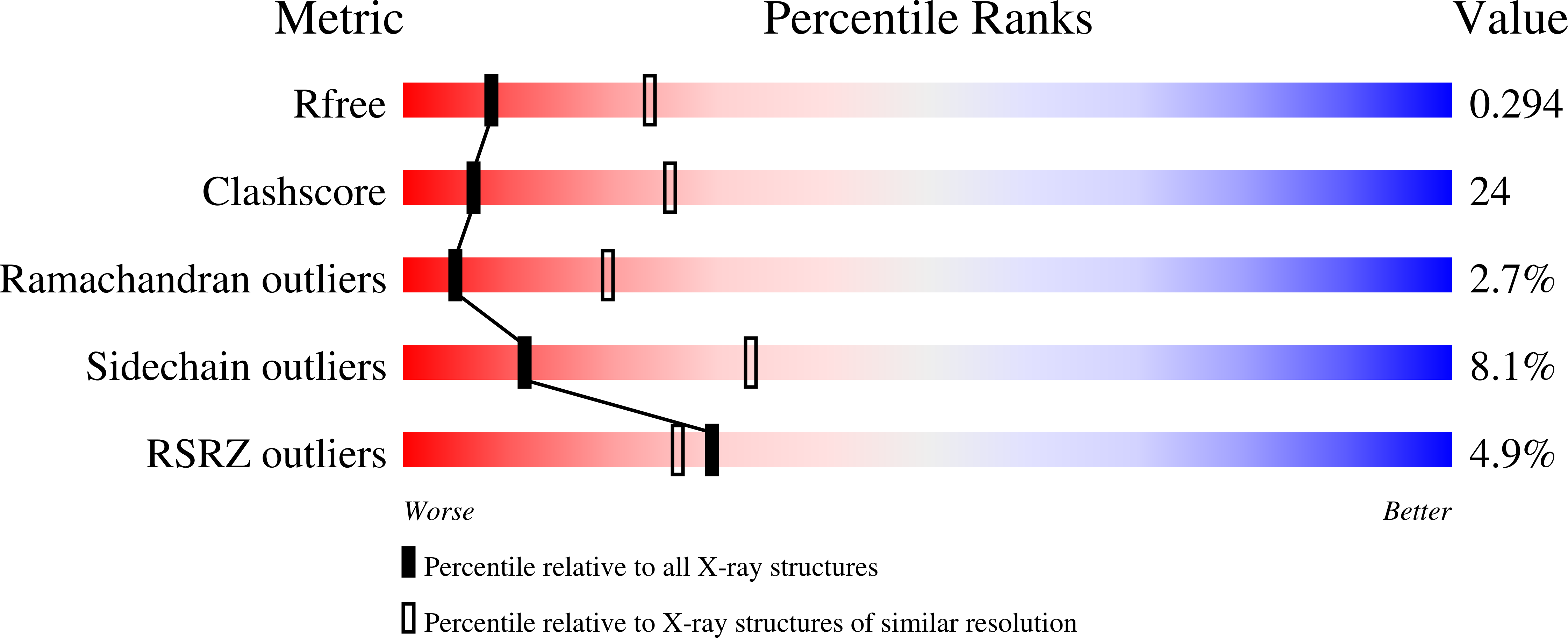The structure of the TrmE GTP-binding protein and its implications for tRNA modification
Scrima, A., Vetter, I.R., Armengod, M.E., Wittinghofer, A.(2005) EMBO J 24: 23-33
- PubMed: 15616586
- DOI: https://doi.org/10.1038/sj.emboj.7600507
- Primary Citation of Related Structures:
1XZP, 1XZQ - PubMed Abstract:
TrmE is a 50 kDa guanine nucleotide-binding protein conserved between bacteria and man. It is involved in the modification of uridine bases (U34) at the first anticodon (wobble) position of tRNAs decoding two-family box triplets. The precise role of TrmE in the modification reaction is hitherto unknown. Here, we report the X-ray structure of TrmE from Thermotoga maritima. The structure reveals a three-domain protein comprising the N-terminal alpha/beta domain, the central helical domain and the G domain, responsible for GTP binding and hydrolysis. The N-terminal domain induces dimerization and is homologous to the tetrahydrofolate-binding domain of N,N-dimethylglycine oxidase. Biochemical and structural studies show that TrmE indeed binds formyl-tetrahydrofolate. A cysteine residue, necessary for modification of U34, is located close to the C1-group donor 5-formyl-tetrahydrofolate, suggesting a direct role of TrmE in the modification analogous to DNA modification enzymes. We propose a reaction mechanism whereby TrmE actively participates in the formylation reaction of uridine and regulates the ensuing hydrogenation reaction of a Schiff's base intermediate.
Organizational Affiliation:
Max-Planck Institut für Molekulare Physiologie, Dortmund, Germany.
















